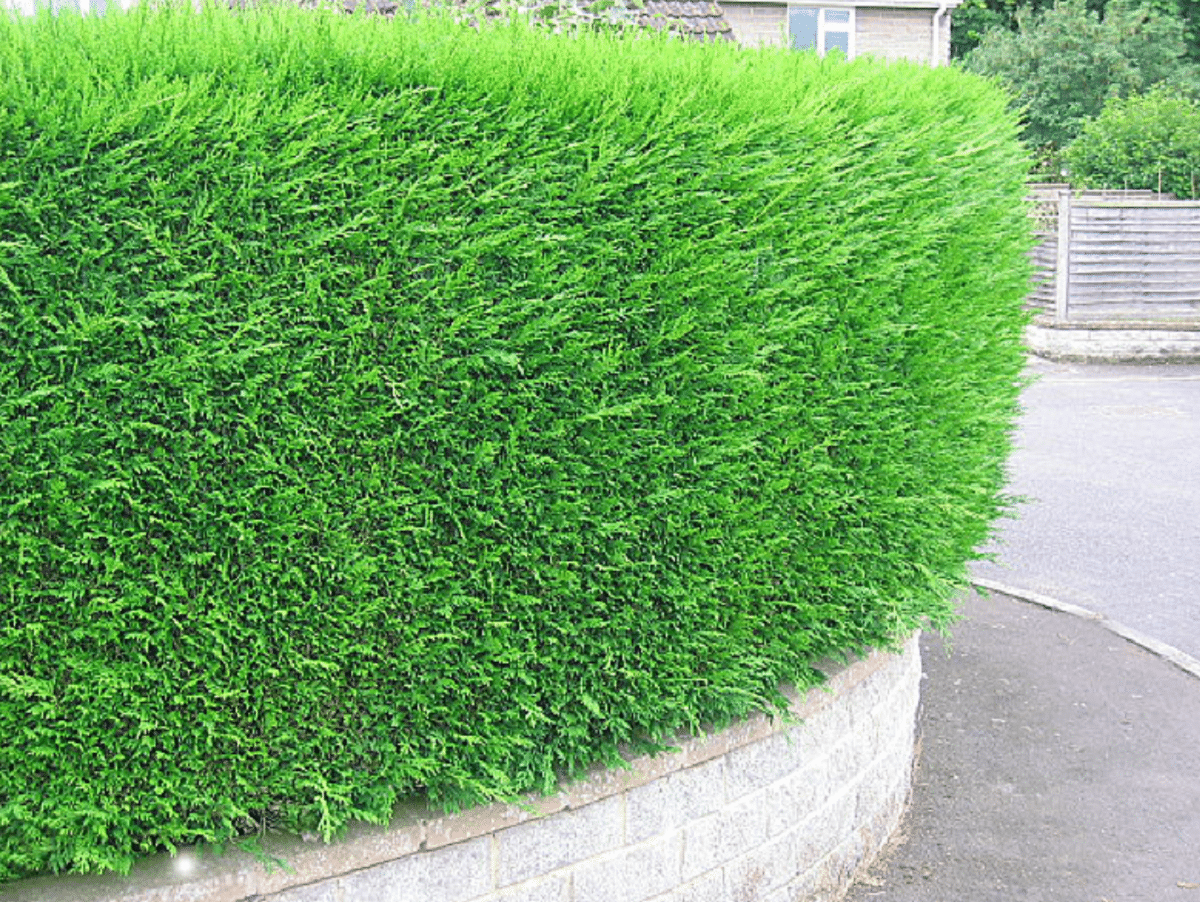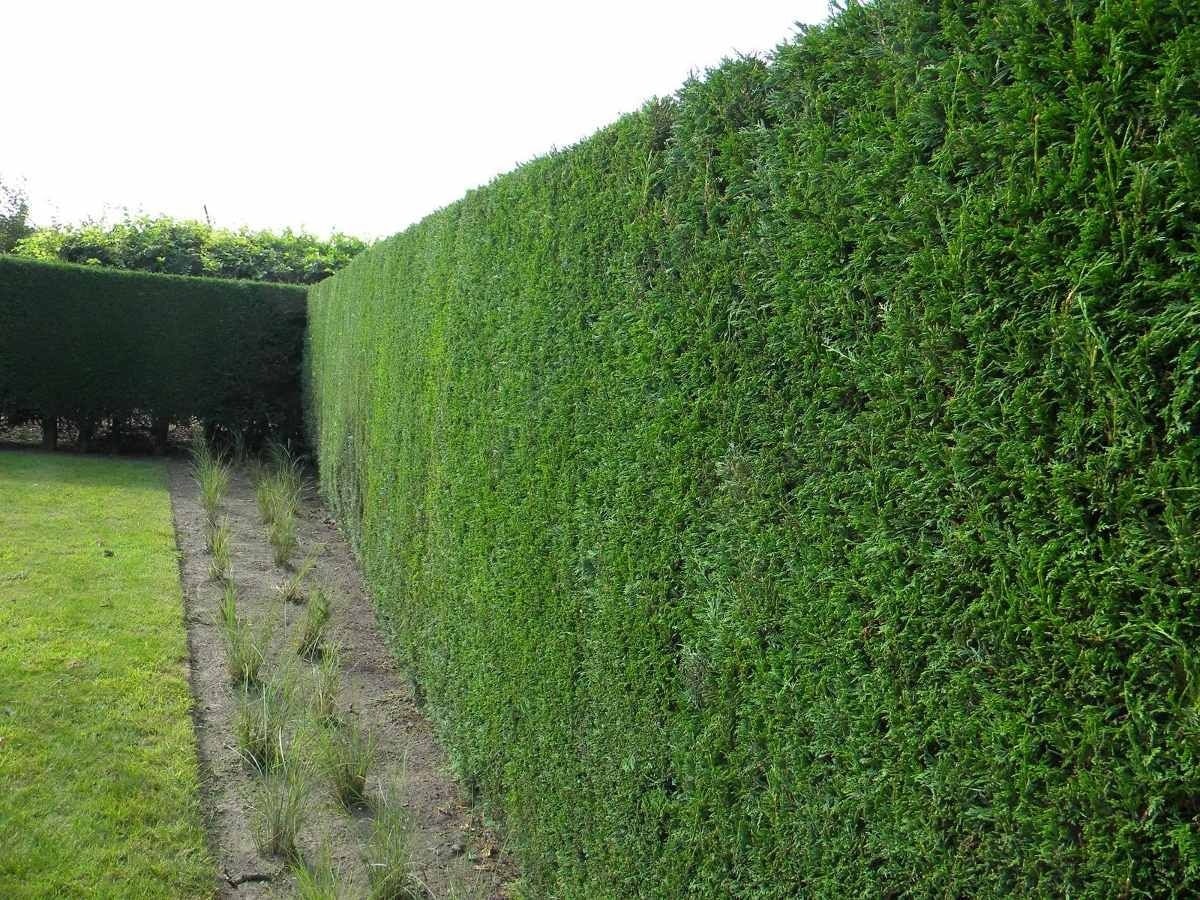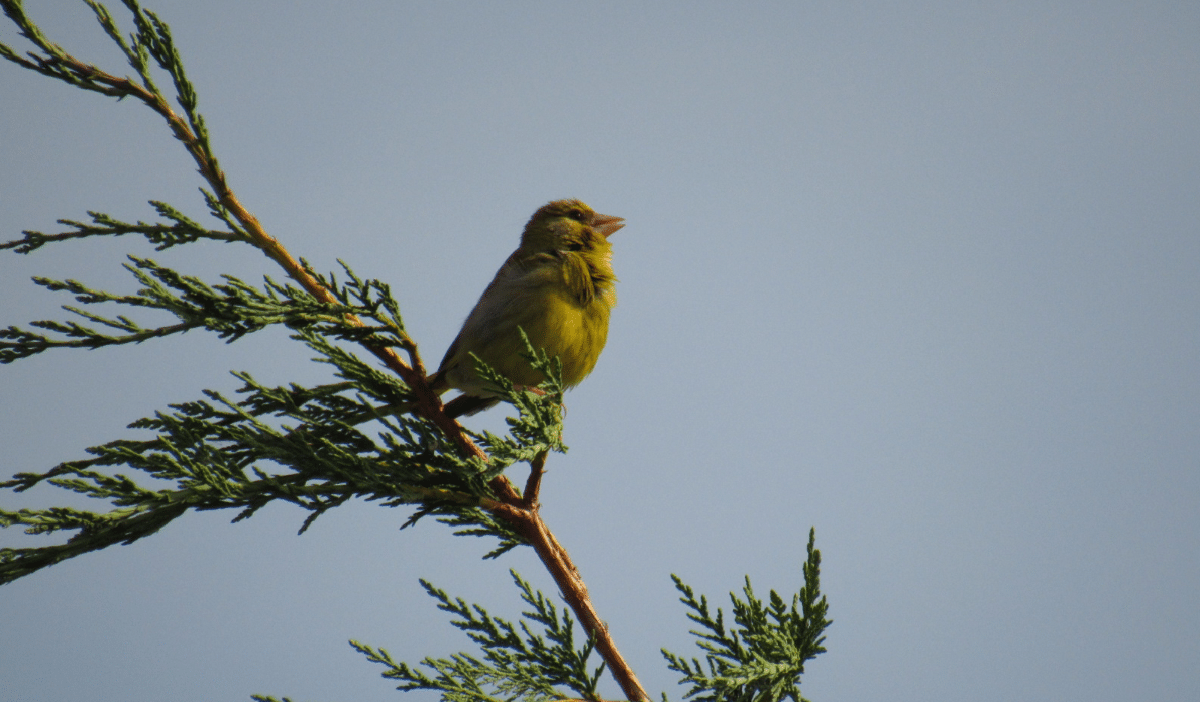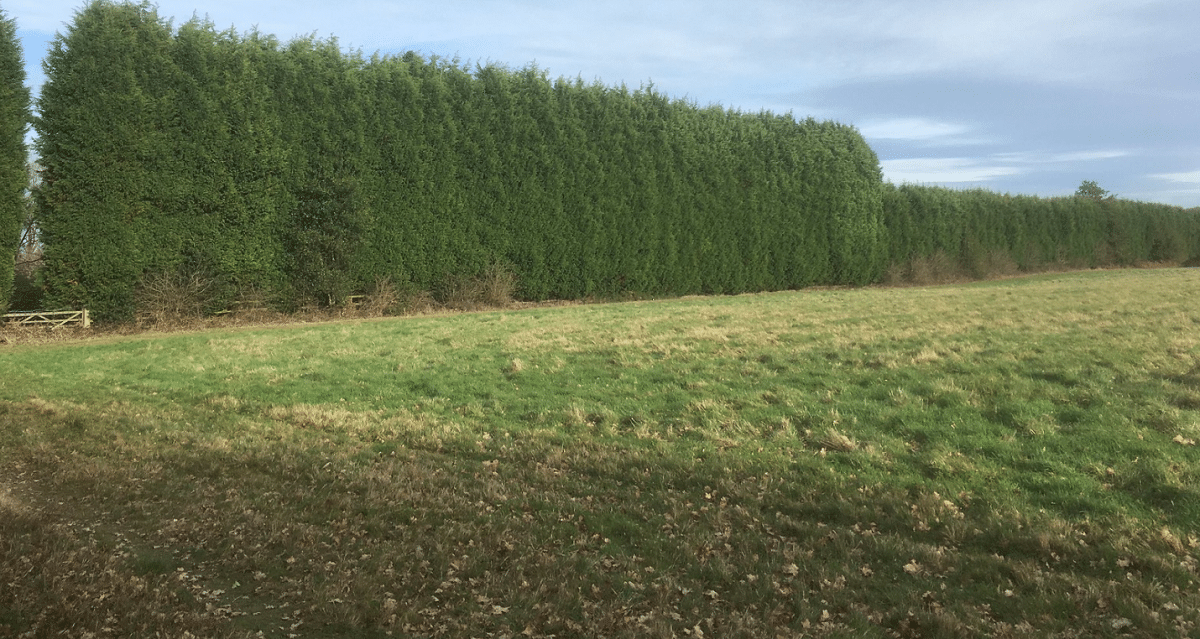
If you have a large garden and you want to create differentiated areas in it, you can use those species that work as a screen. Tall hedges are ideal when looking to create a boundary with the outside. Their framework makes them ideal for use in living fences, as they allow creating the necessary privacy by effectively covering the boundaries.
There are many species of tall hedges but today we dedicate ourselves to Leylandi, as meets various conditions to become an ideal screen. But before we get started with the information, here are some general information.
General information about Leylandi

Evergreens can be important species in a home garden, providing green color and shade throughout the year.
El x Cupressocyparis leylandii It is better known as Leylandi, Leilandi or Leyland Cypress. It is a fast growing conifer, so it becomes a very interesting option when it comes to covering large areas.
Leyland cypress (x Cupressocyparis leylandii) it is an evergreen tree which can be a useful large specimen or works well as part of a planting screen, hedge or windbreaker.
Leylandi is a species whose growth is favored in moist, fertile and well-drained soils, located in full sun. Tolerant to a wide variety of soils, including the relatively lean ones, it adapts well to pruning and shearing. The seeds produced are viable, but may not be true to the parent plant.
A fact that goes unnoticed in the vast majority and that tends to create confusion in some, is that the Leyland Cypress is the result of a cross between two trees, which are native to the Pacific.
These trees are the Monterey Cypress and the Alaska Cedar, although the latter is also often known by the name of Nootka False Cypress.
Features
This species belongs to the family Cupressaceae and it is ideal for large gardens, as it must be taken into account that reaches a height of between 20 and 25 meters and a diameter of between 5 and 6 meters. In general, it is planted together although it can also be planted in isolation, especially if it is to highlight its beauty.
Thanks to its structure, it forms an ideal plant screen, but it must also be taken into account that develops rapidly, a great virtue in the case of living fences, since it grows around one or two meters per year.
However, this rapid growth also has certain drawbacks both when it comes to maintenance and when thinking about dimensions, as it is a species that will be limited to large gardens.
An important fact or fact must be highlighted and that is that the plant or species itself managed to inherit some characteristics from its father. Such is the case of its habitat, as well as the foliage of the plant itself and its great resistance to winter.
In the same way, it also manages to acquire traits such as a unique branching pattern and accelerated growth rate. As far as the foliage is concerned, this is made up of smooth pointed leaves in flattened twigs and are dark blue-green when mature, soft green when young.
Virtues of Leylandi

There are many varieties of Leylandi, although any of them can be used as a screen as they all offer great resistance and adaptability.
This species is undemanding and adapts to all types of soils, it is rustic and that is why it is the most popular hedge plant in Spain. Too accommodates intense cold climates and it is even possible that it grows in areas near the sea.
Pruning is not a problem and it adapts to them without problems, although be careful with the attack of fungi and mealybugs, who attack him frequently.
Farming
Leyland cypress thrives best in a place that receives full sun. Although this does not mean that you can keep the plant in a place where it receives a changing shade during the day. Even so, our recommendation is that you do not have it in an area where it is or is completely shaded.
The best time to plant is early spring, to give the tree a full growing season before the cold of winter hits.
When several trees are planted in a group, leave 2 to 3 meters of separation between them to prevent them from piling up when they reach maturity. Although this is an aspect that will depend on each person and the idea of living screen that is had in mind.
Regarding the placement of the plant in the substrate or soil, you will have to do it in a hole about twice the width of its root ball and to the same depth as it was in its container.
Once this is done, proceed to fill the hole with soil, in such a way that you make sure that there are no air pockets around the roots. Try your best to compact the soil well and water the tree thoroughly.
The Leylandi has a naturally attractive shape and does not require regular pruningAlthough you can prune its branches or shear the entire tree slightly to encourage the growth of dense branches and shrubs.
The best way to prevent situations like this is place this plant in an area with good air circulationClean debris from under the tree regularly and irrigate only the root zone with a soaker hose or drip irrigation system to keep the foliage dry.
Plagues and diseases

As we mentioned a moment ago, there are some problems that in most cases do not happen, but this does not mean that it cannot happen. Thus, the plague of the sachet caterpillar it is the biggest cause of problems in this species.
Once it settles and begins to feed, if the necessary measures are not taken in the first days, rest assured that your plant or tree will be without leaves in a very short time.
In the same way, this species is prone to ulcers whose effects will be noticeable in the time following the drought. That is, the ulcer will cause the foliage to be affected.
Care
The Leylandi has a reputation for being low maintenance, adaptable to a range of sunlight and soil conditions. They don't even need to be pruned, unless you want to achieve a specific, consistent height.
These grow in full sunlight, at least six hours of direct sunlight, unfiltered and per day. They can also tolerate partial shade. The soil should be well drained, but other than that, Leyland cypress trees are not picky.
Water your cypress deeply and irregularlyOnce a week, as the tree ages, you can give it water less often. Don't use an irrigation system, because that can over water your tree and lead to root rot.
You should fertilize in early spring, before your Leylandi has new growth. Use a balanced, slow-release fertilizer with an NPK value of 10-10-10. You do not need to fertilize every year, and should be left to your discretion.
Now you have all the information you need to have this tree in your garden and to offer it the best care.
The Leylandi is a beautiful tree that has the particularity of being used to create screens of living vegetation thanks to its characteristics. Now you know everything you need to know about this species.
Hi Maria, thanks for your post. I have a Leylandii fence that were already in the house and they are huge, more than 3 and more than 4 meters ... some very tall. As some have died (phytophthora, I think) I am replacing them. Those who have sold me, small, about 1,5 meters, are lighter. Is it because they are smaller or because it is a different variety? How can I know that? Thanks
Hi Marian.
I answer you, Maria no longer writes on the blog.
The Leylandi has dark green needles (leaves), from young.
If you have been sold one with light green or yellowish-green needles, it is probably not a Leylandi.
Anyway, if you want to upload an image to tinypic or imageshack, copy the link here and I'll tell you.
A greeting.
Hello. What is the distance at which one specimen must be planted from another to have a good fence?
Hi Sebastian.
At least 30cm. If they are young, for a while they will look… well, regular 🙂, but as they grow they will form an interesting hedge.
A greeting.
To keep them at 2 meters ... how much should I let them grow and then cut them to 2 meters? or as soon as the 2mts are passed I begin to emerge? Thanks
Hi Lau.
Yes, the ideal is to start pruning them a little as soon as they begin to exceed 2 meters, since if you wait longer then pruning will cause them to lose ornamental value.
Regards!
Good morning,
Thanks for the information.
I have 12 leylandis that I planted a year and a half ago. When I planted them they were already two meters tall.
All are green and fine except for one that is smaller. Is there any special treatment that I can do to this tree to balance it with the others?
On the other hand, could you remove the holding rods?
And one last thing. Of the 12 trees, all of them have a vigorous tip except for two whose tip has a flaccid appearance. Does this represent something of the tree, excess or lack of water, minerals...?
Thanks in advance, regards!
Hello Ivan.
It is important to bear in mind that fertilizers are not "medicines", but rather they represent a supply of nutrients that it is advisable to give to healthy plants, since that is when they can best absorb and take advantage of them.
That said, I recommend treating it with a plant biostimulant, which you can find for sale at any plant nursery and maybe even a large Chinese store (bazaar). If this is not the case, I recommend you search Amazon or online stores. This will help him 'snap on' a bit and grow. You can also throw it at those two you say have a limp tip.
How far apart are they from each other anyway? It is important that they are a little far away, a meter or so, because if they are very close together, what will happen is that the strongest will end up with the weakest, since they will "steal" nutrients and space.
If you have any more questions, ask us 🙂
Greetings.
I have planted, at the end of September in the north of Spain, 42 leylandis one meter high in my garden to use as a screen for it and I applied 12 to 14 small grains of slow release fertilizer and about 70 centimeters apart the one from the other and I have watered it without wetting the tree and without watering the roots excessively. Can it be harmed if I water it excessively?
Hi Emilio.
Both lack and excess watering can be harmful. When you water, you have to try to soak the soil. And then, do not water again until a few days have passed and it has dried.
A greeting.